Meet the medical students risking everything to help those on both sides of Venezuela’s brutal conflict.
When I introduce myself to a young man in scrubs in front of the Sambil shopping mall in Caracas, he seems suspicious. I’m used to it, though: today, this feeling has become the norm in Venezuela. After all, the country is on the brink of a civil war.
I’m here to photograph the Cruz Verde (Green Cross), a team of volunteers from Universidad Central de Venezuela that risk their lives to help those injured on both sides of the conflict. I give the young man the name of my contact within the group and he seems reassured. Soon, two other Cruz Verde members are taking me a few floors below ground, into the shopping mall’s parking garage. It is here, in this dimly-lit catacomb-like space, that the Cruz Verde gets together and prepares for the day ahead.
Cruz Verde started to operate during the anti-government protests of 2014, though that was before they had a name and a serious organization. At the time, around 40 medical students decided to help their peers as they clashed with the National Guard, the government’s official police force. Today, the group of volunteers has grown to 200 members in Caracas, including students, university professors, and even parents who want to do more than hold a banner at a protest. Their medical equipment is donated around the east of Caracas, and one of the parents even borrows a massive red Ford truck to act as an ambulance. Across the country, similar groups are forming.
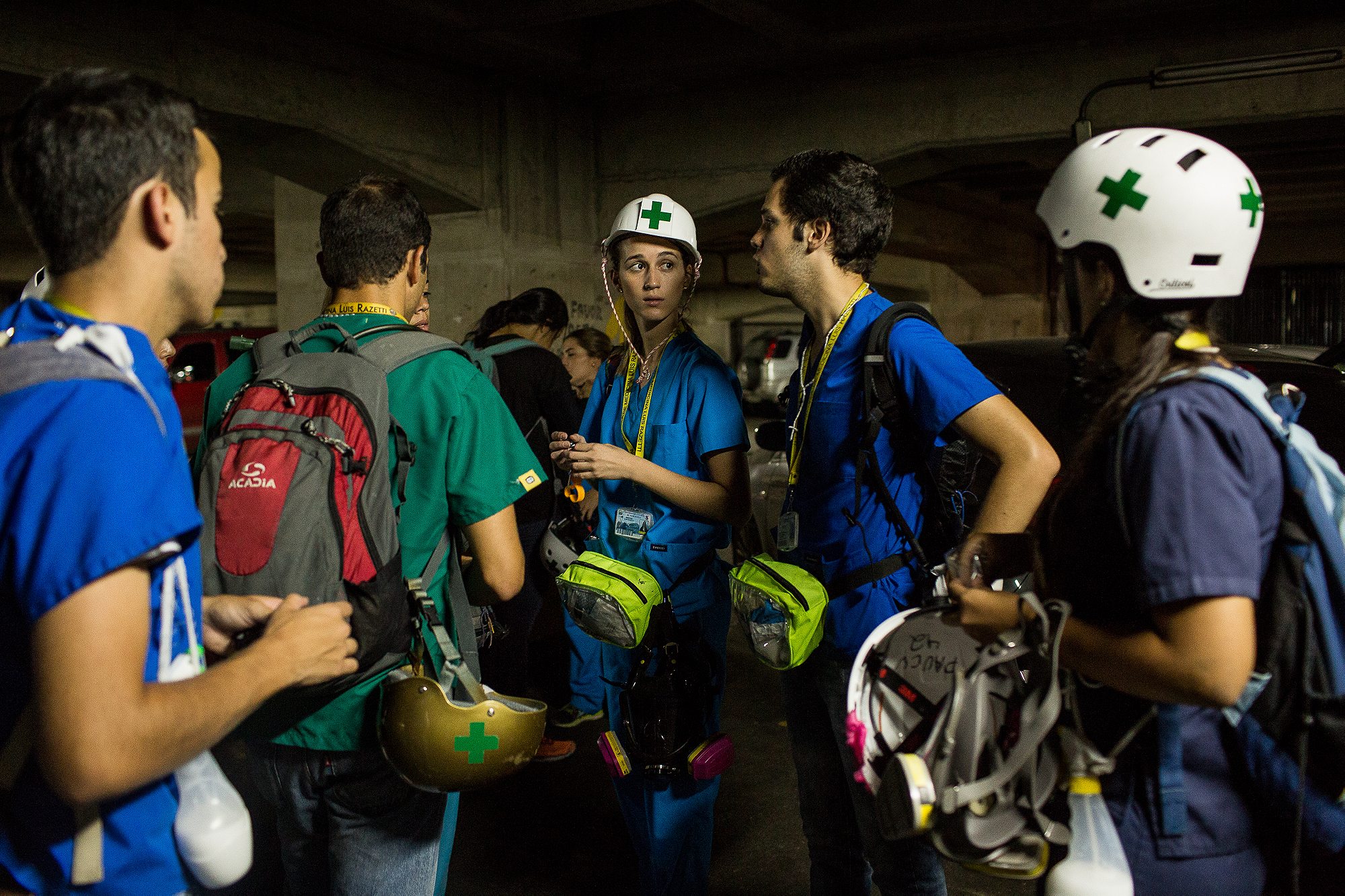
Cruz Verde has been so effective in their work that the group has become one of the most recognized features of the protests. As we gather in front of the shopping center, the teams start organizing for the day’s operation. The red team operates on the frontlines of the protests. Their job is to evacuate anyone who is injured or has fainted because of tear gas. They take them to the orange team, which works in the middle zone—around 600 feet from the conflict—and evaluates the person’s condition. Then it’s up to the green team, at the back of all the confusion, to carry out first aid or place the patient in the red van or a motorcycle to be taken to the closest hospital.
A little after noon, the teams are ready. They wait for a report about the demonstrations to know where clashes are taking place. While they help both sides, government forces are suspicious of their activities so they tend to be more present among the opposition. We hear that clashes are starting on the Francisco Fajardo highway. The teams have a group prayer and start marching in line to the highway.
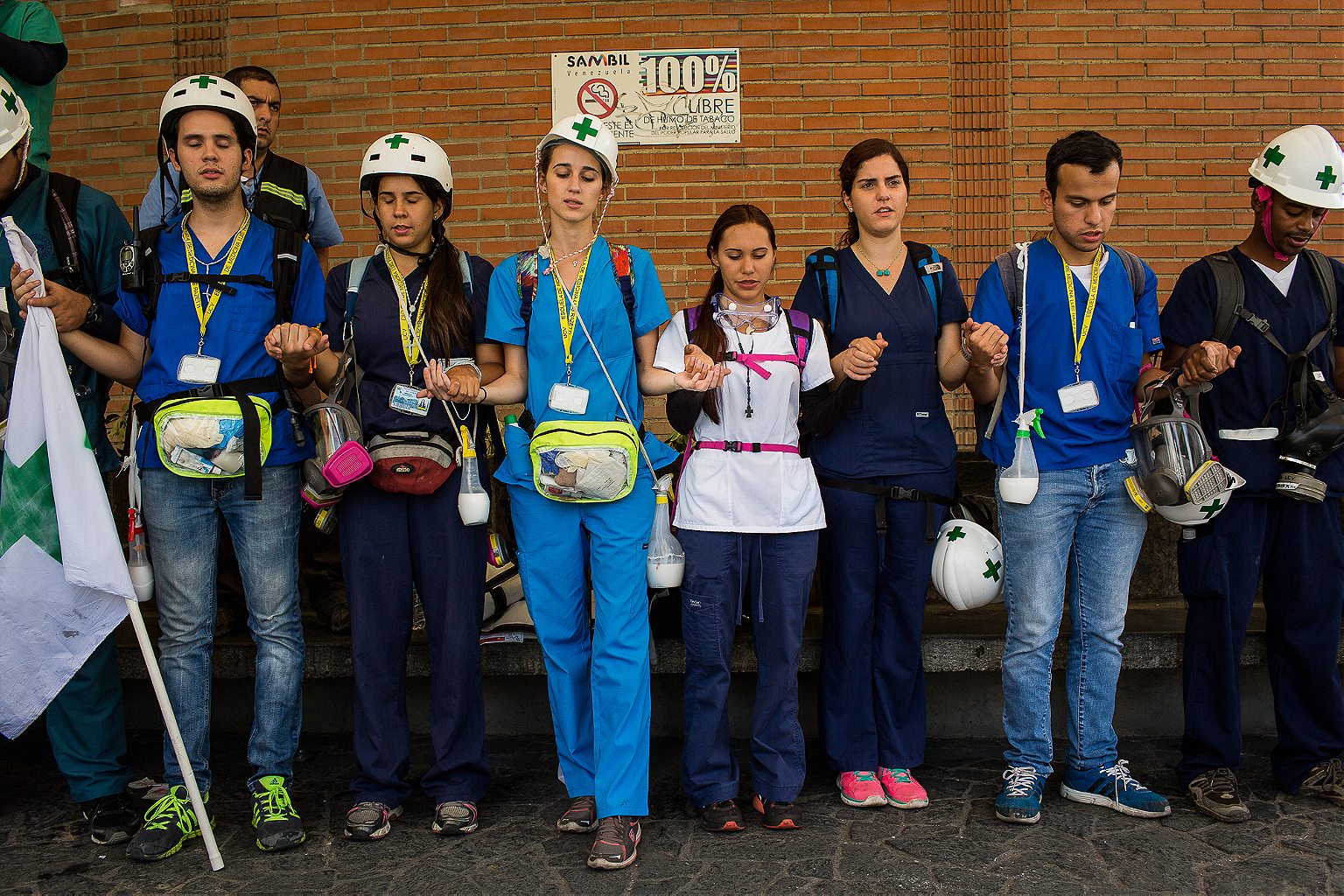
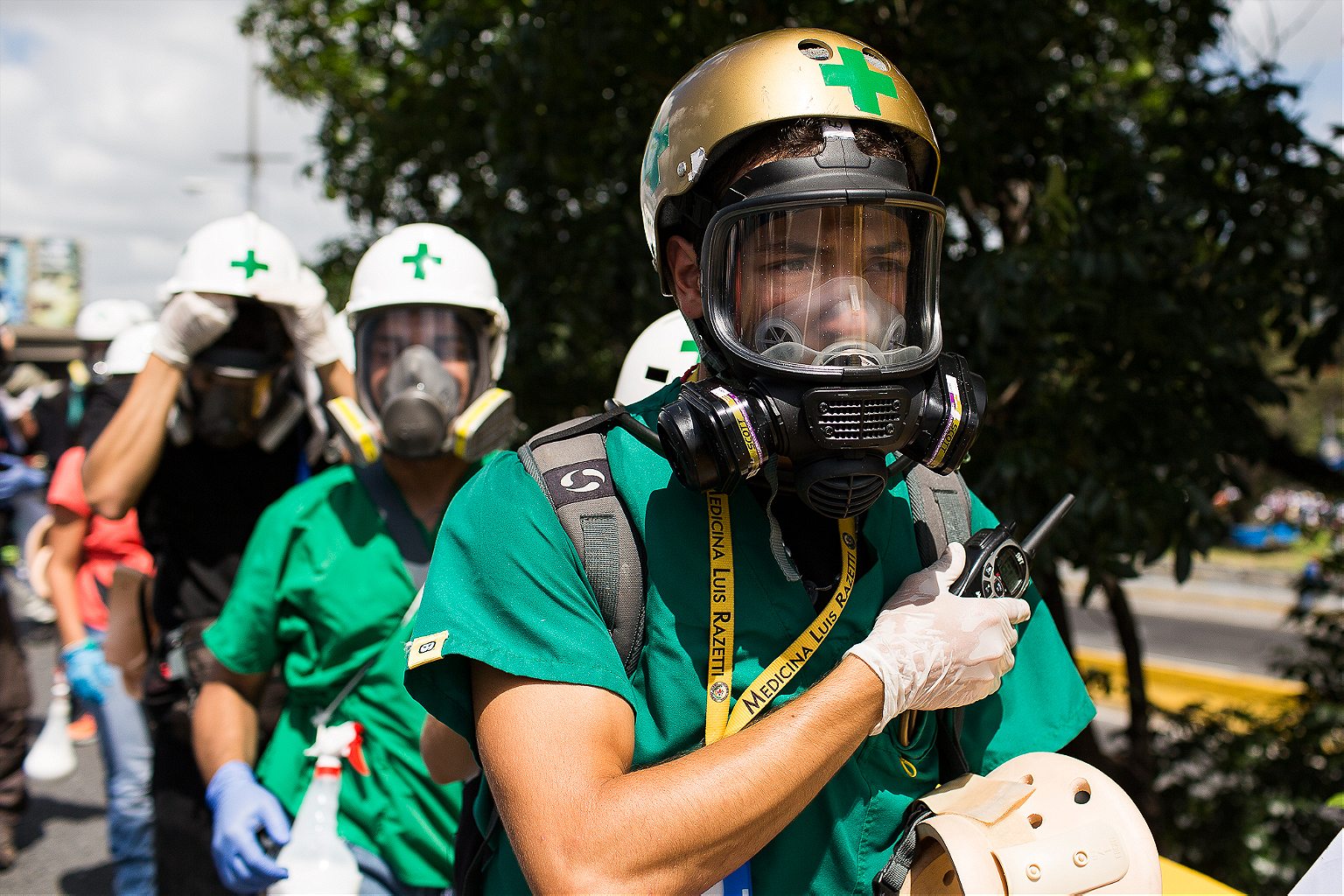
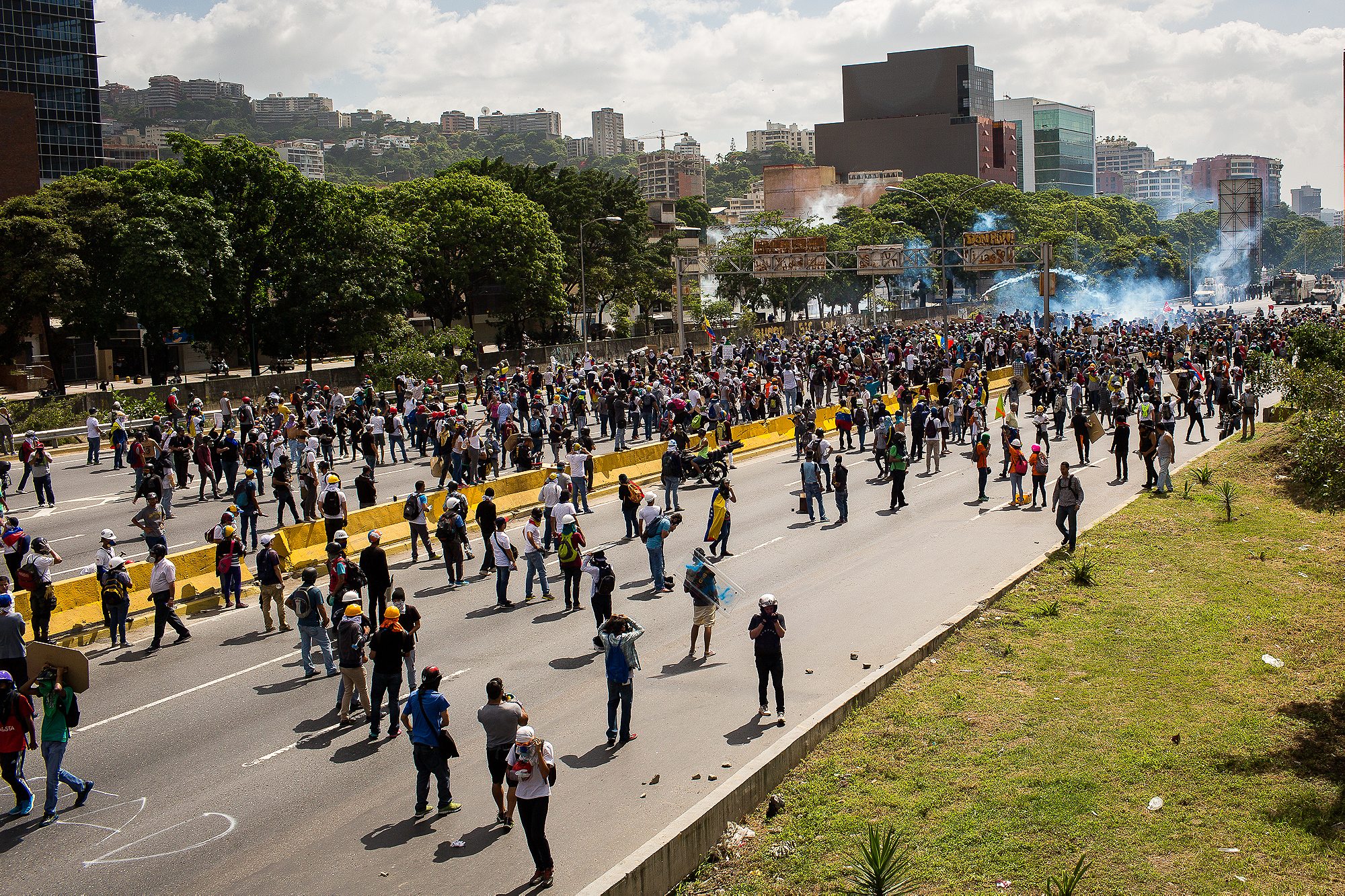
As we walk towards the conflict zone, we meet dozens of people moving away from the fighting who cheer us on. The support is needed; I can tell that some of the Cruz Verde members are anxious. The closer we get, the more people are running away. At one point we are almost trampled by thousands of people fleeing water cannons and tear gas. I stick with the red team, which keeps moving forward. The sound of explosions is constant, and the agonizing smell of tear gas penetrates my gas mask and clouds the sky. Among the people running, I see a few dozen young students holding ground, but in this fight of David versus Goliath, Goliath wins every single day.
The red team has sprung into action, spraying people’s eyes with a sodium bicarbonate solution that helps to soothe the tear gas. But soon, the 23-year-old team captain, Andres Quintero, decides that we have to move back to stay safe. We take one of the bridges that leads to the highway. Suddenly people are running in our direction, screaming. Everything is so chaotic. Some are climbing up the walls, others jumping from bridges onto the roads below–anything to escape getting caught by the National Guard. There have been reports that people prefer to jump into the Guaire River below rather than risk getting caught and face being robbed, beaten or even tortured.
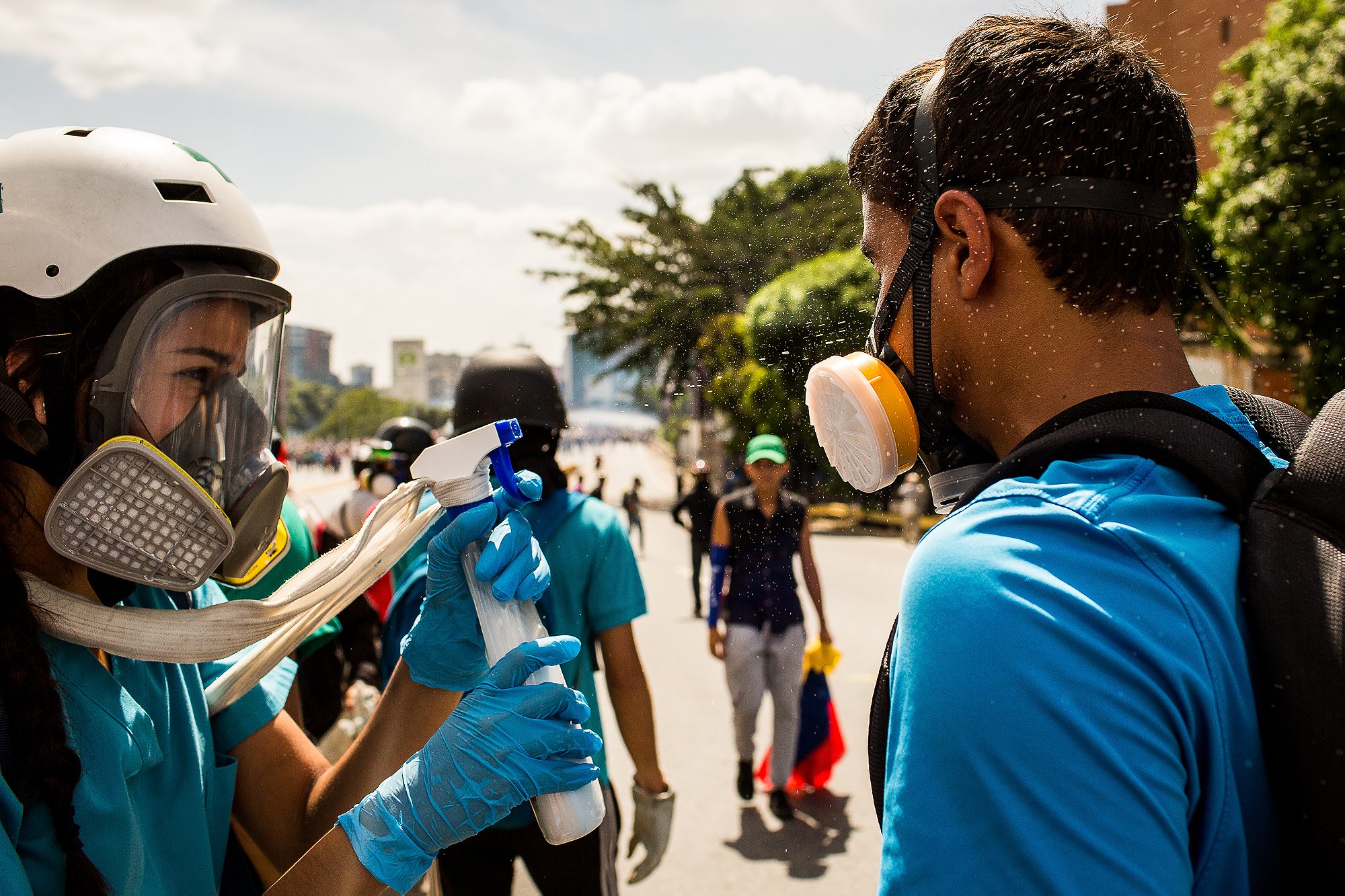


As we realize we are trapped by the National Guard on both sides, we raise our hands and Quintero waves a white flag with a green cross on it. This signal of peace doesn’t stop them from throwing two tear gas canisters right at our feet. When the smoke is gone, I think: This is it. We are going to be arrested. But to my surprise, the official makes a movement with his weapon that indicates we can leave. We move as quickly as possible.
As we get away from the havoc, a woman who had joined our group faints. She was exposed to the tear gas. The Cruz Verde team lays down a portable stretcher and, after providing first aid, brings her to a pick-up point where a motorbike takes her to get proper assistance.

By that time, the demonstration is over. It’s already getting dark; this is when things can get extremely dangerous. The Cruz Verde decides to call it a day. “We cannot be heroes because heroes fall,” one of the volunteers told me earlier. “And if we fall, there is no one to help us or the others.” I walk back to the parking garage with them and watch them organize the medical supplies for the next protest.